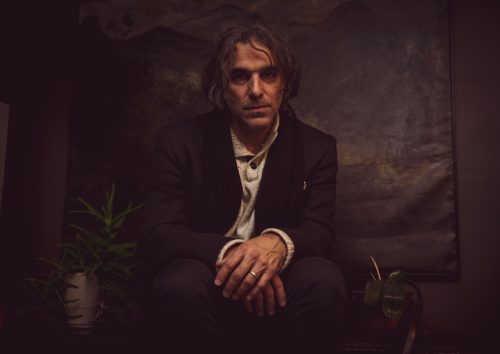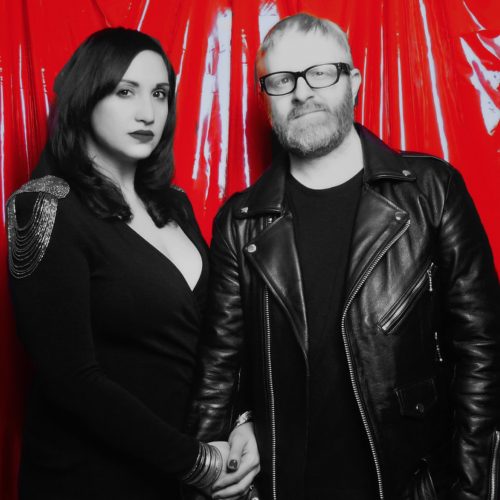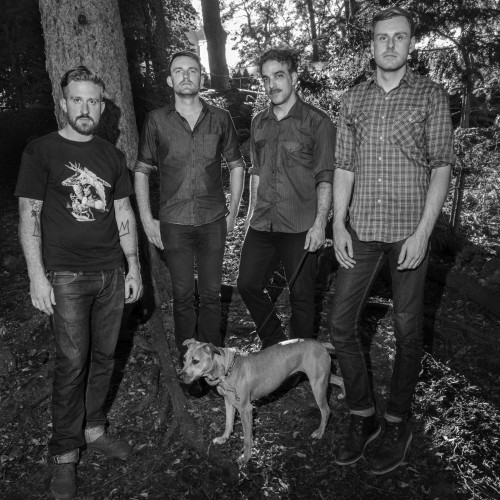With his longtime group Lewis & Clarke, Lou Rogai has crafted music that transcends and transfixes, challenges and comforts. On the heels of film scoring and last year’s string quartet composition “Implications in D Major,” the composer has just released under his own name “Cathedral,” a three-movement, 17-minute piece for chamber ensemble. Rogai recently chatted with Eric Schlittler about thew new piece, a performance this Friday at Karl Hall in Wilkes-Barre presented by Veriditas Recordings (which released “Cathedral”) and Highway 81 Revisited, and the future of Lewis & Clarke.
Your new album is described as an “experimental elegy for chamber ensemble in three movements.” Would you consider that elegy to be metaphorical, literal or a combination of both?
Yes, a metaphor that can be applied to whatever loss we are experiencing. For me, it’s a collective loss of the American Dream, things we all counted on and will no longer exist. Authenticity lost to algorithms, the passing of loved ones. The most important part of the elegy is moving forth, informed and stronger. We need the necessary space to process all of it, whatever the architecture may be. Cathedral, as that space, is both metaphor and literal.
“Cathedral” feels very clearly like a solo work, whereas with Lewis & Clarke while it was clear you were always the captain steering the ship there was more of a collaborative sound happening on those albums. Was it a conscious decision to create something more singular with this album, or was that a development that happened more organically?
My interests and sounds have naturally changed. There came a point, while writing string and horn arrangements for Lewis & Clarke songs, when I listened back without the actual song as a framework. I heard them as meaningful standalone pieces, rather than as accompaniment. I asked myself, “what would happen if I took away the song? Am I allowed to do this?” I spent a lot of time with those ideas, which led to scoring a few short films and releasing both “Implications in D Major” and “Cathedral.”
Have we heard the last from Lewis & Clarke?
Plenty more, the fourth Lewis & Clarke album is nearly finished.
This album is your debut for Veriditas Recordings. Can you tell me a little bit about how you started working with the label in collaboration with this new recording?
I’ve partnered in a new label with some fearless, talented people who want to bend genres, not be dependant on algorithms, and provide resources like graphic design, recording, rehearsal and performance spaces. It’s everything I’ve always loved about the DIY spirit, that you can be highly functional without being corporate.
The press release mentions influences as disparate as Gregorian dirges, jazz musician Chet Baker and avant-garde composer John Cage informing your latest work. Beyond musical influences, how important of a role does location play in informing your art from the city of New York, which seemed central in this latest piece, to your home in the Delaware Water Gap?
Where we hear things has a lot to do with how we hear things. I’m in NYC much more these past couple of years. I grew up there, it’s in my DNA. I first heard Gregorian Chant as a child at the Cathedral of St. John The Divine. I spent my youth in pre-gentrified Brooklyn, and I remember the old ways. I walk and listen to Chet Baker in my earbuds, and everything makes so much sense. Then I’m back home walking in the woods, and Chet Baker still makes the same amount of sense in this contrasting environment. Without perspective, we exist in a snowglobe. Without space, we never consider that perspective.
What about John Cage?
Cage played with concepts of time, durations of clusters moving at their own tempo. I see this as both a natural and city-pace, playing with movement between notes, between buildings, things moving together, but separate. I wrote the woodwinds in the central movement, “Acceptance” in such a way, to function as a dirge. A lament with nested proportions, to use a Cage-term. The words are about accepting one’s place in both the grand and micro schemes.
Can you share a little bit of what the recording process was like for “Cathedral”?
I had a melody in my head for about a year. I really liked the way it sounded on reed organ, which led me to finally chart it out for brass and woodwinds. I also liked the way it sounded on piano, but not necessarily more than the guitar version. Rather than choose one, I decided to create three variations. I tracked most of it in my studio and Mixolydian with Jay Rattman on woodwinds and Julian Rogai on double bass. Brass was performed by Paul Arbogast, tracked by Daniel Smith (Danielson Family) under the direction of Joshua Stamper, who notated my arrangements. I tied the three variations together with field recordings from meaningful places in both NYC and DWG.
More about the field recordings?
I wanted to capture energies within certain spaces, manipulate and superimpose them. The corridors of my studio building, the hallways of my son’s school in NYC, I felt like I was picking up these fleeting gems, bursts of sound that possibly go on forever. I tracked myself singing in the interiors of Riverside Church and The Cathedral of St. John The Divine. I recorded the creaky iron gate at the bottom of my steps and forest sounds at dusk. Patrick McGee (Acidhead) was instrumental in helping me engineer and mix the field recordings, he also performed flutes. He’s a very gifted artist/producer, who I feel is bending music in directions we’ve yet to hear.
Your son Julian plays on your latest recording. What is it like collaborating with him on a musical level?
He has a great energy about him, a nonchalance but also an intensity. It’s a dream to work with him, he’s in the pocket and makes good choices. He’s also been turning me on to new music.
The passage of time, and growth are central themes of your latest work. If you could play this album to a younger version of yourself, what do you think his reaction would be?
I think about that a lot! I want him to feel like Marty McFly when he returns to 1985 and sees that Biff is washing his jeep.
You’re playing some live gigs in support of this new record (including one at Karl Hall on Nov. 22 in conjunction with this site). What can audiences expect at these shows as far whom you’re playing with, and what they might expect to hear?
I’ll be playing a variation of “Cathedral” and Lewis & Clarke music with a small ensemble: Julian Rogai (double bass), Alex Luquet (double bass and electronics), Patrick McGee aka Acidhead (woodwinds) and possibly Asia Mieleszko (vocals). It’s a Veriditas Recordings label show, with Acidhead and Chukwu performing. There’s also an artist called Noxen that’s making really interesting lo-fi pop.
What might the future hold for you musically beyond this album?
More orchestral music, more Lewis & Clarke. Producing and collaborations, particularly Cedar Sparks with Julian and our brilliant friend Tim Carbone (Railroad Earth). I’ll continue to shake up the snow globe and see what’s next.
Photo by Jonathan Broady




Leave a Reply